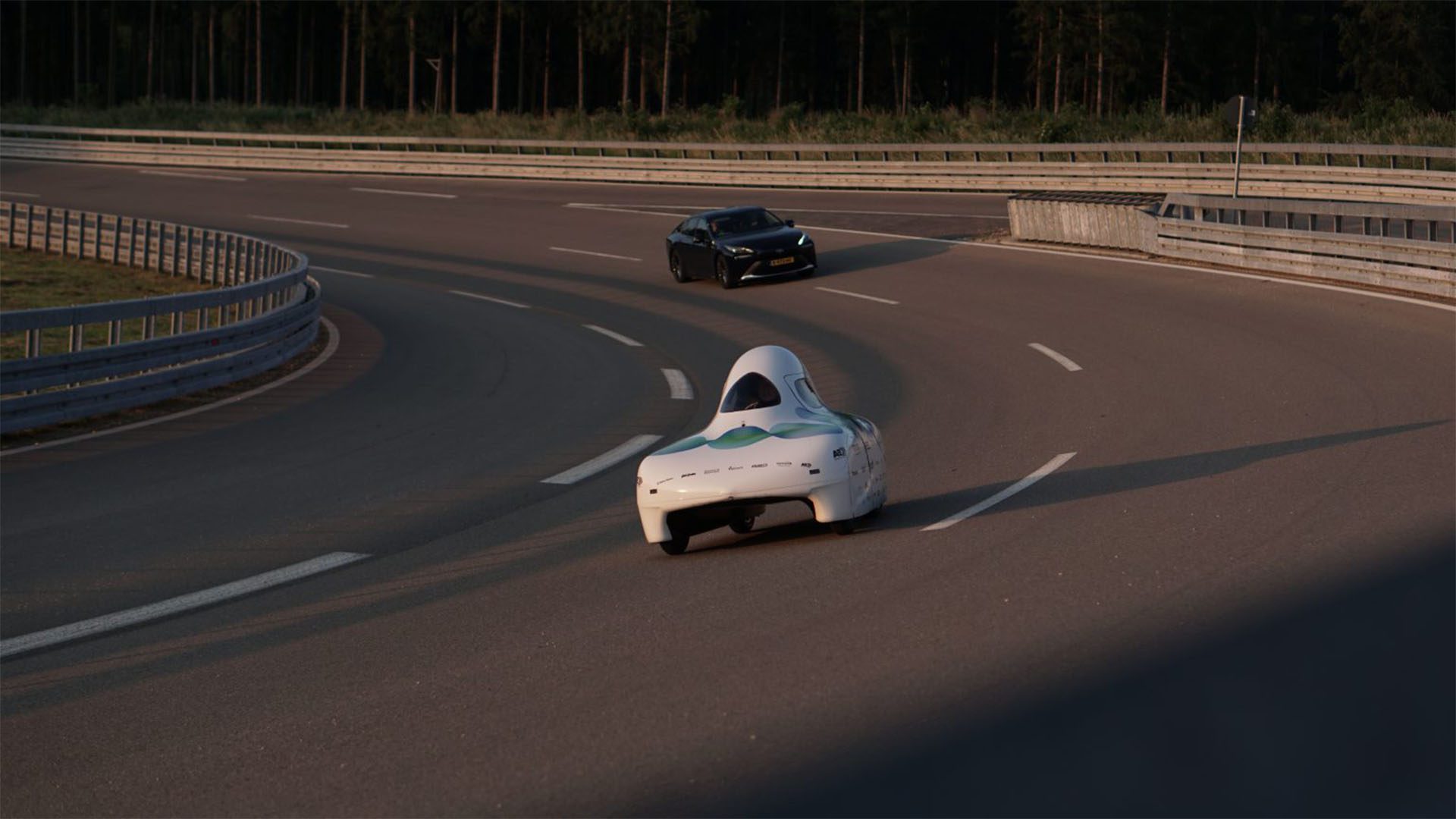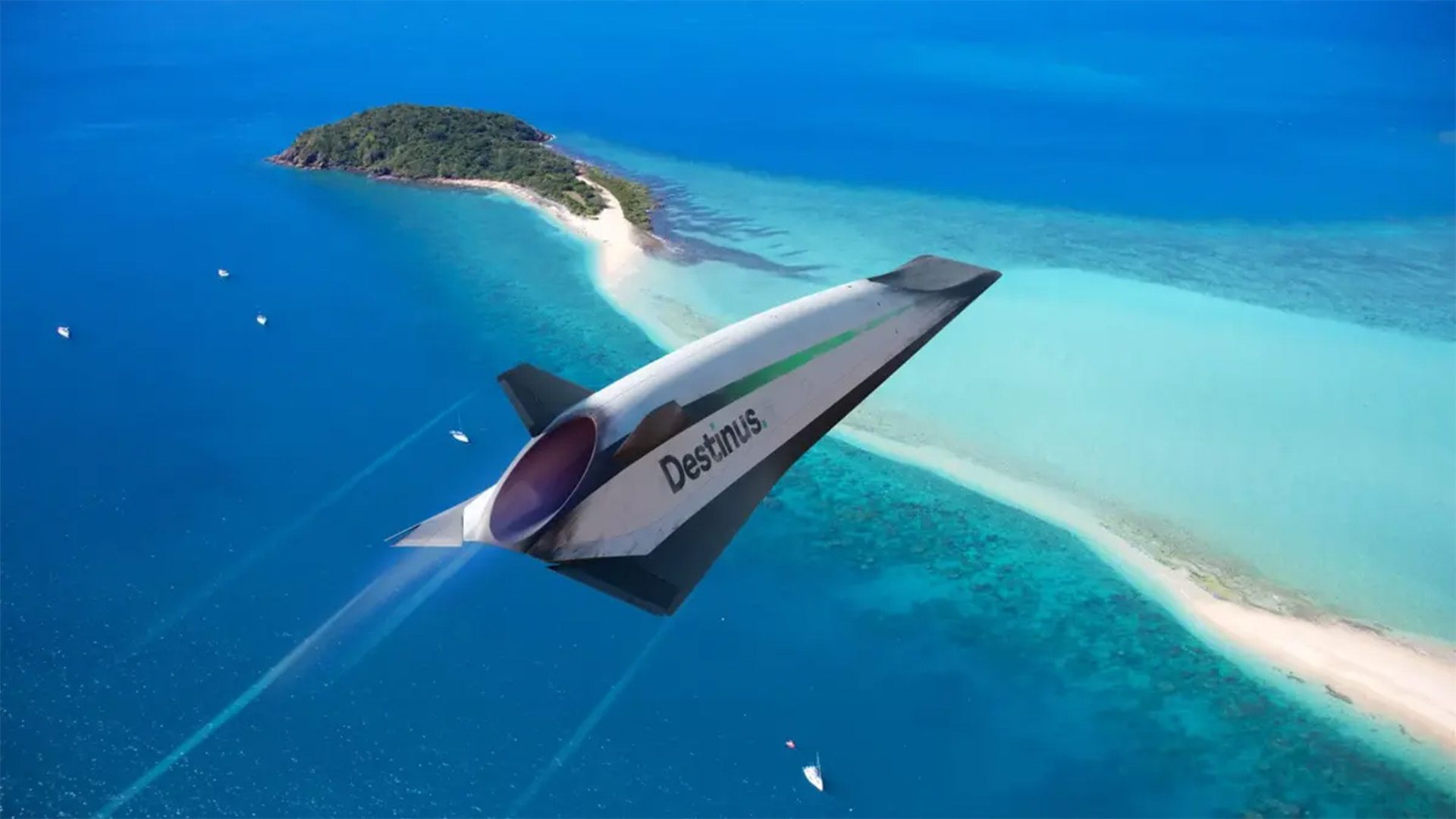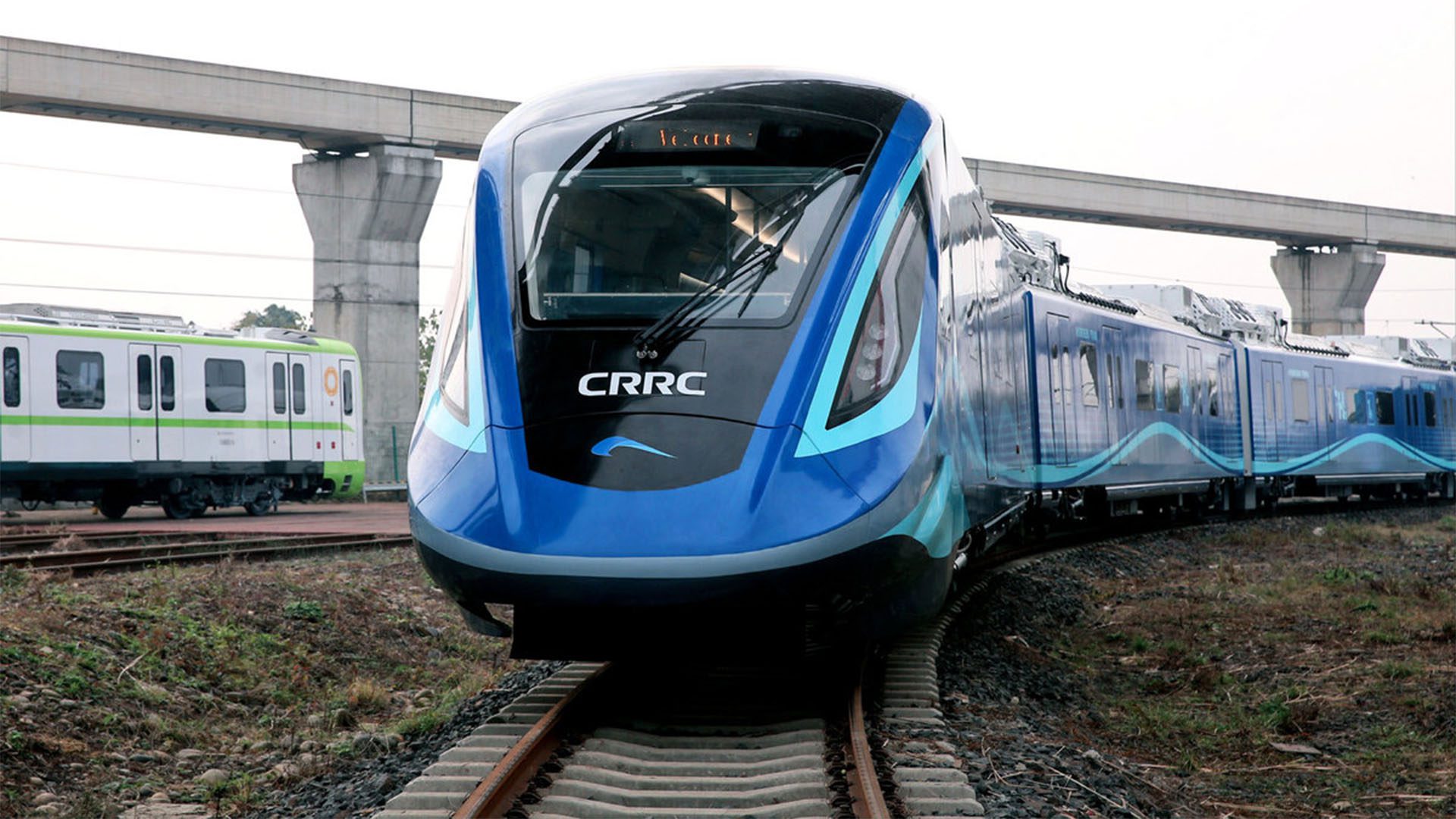In June, a team of students at the Delft University of Technology in the Netherlands set a Guinness World Record for the longest distance driven by a car on a single tank of hydrogen fuel. The tiny car drove 1,546 miles without refueling, which is about the distance between New York City and Dallas.

Eco-Runner XIII
The record was achieved by the Eco-Runner XIII, the latest iteration of the Eco-Runner concept car that student teams from TU Delft have been working on for over a decade. The team set the world record on the Immendigen track in Germany over the course of three days with just two pounds of hydrogen. The crew drove the 71.5 hours in rotating shifts of two hours and only stopped to switch out drivers.
The three-wheeled, 158-pound car can drive about 27 miles per hour and was designed to be as efficient as possible. This is apparent in Eco-Runner XIII’s unique shape, which decreases the aerodynamic drag, and low weight, which is 158 pounds. To minimize the car’s energy losses, the team optimized the powertrain system with a brand-new fuel cell. The energy losses include rolling resistance, air drag, and the losses that occur when converting hydrogen to electricity and electricity to kinetic energy.
Even though the one-person car is not able to drive on normal roads, the team hopes that their developments can propel hydrogen technology closer to the mainstream. The team views hydrogen-powered cars as a complement to other electric vehicles, not a competitor.
As Eliane van Boxtel, the Delf team’s Operation Manager said in a statement, “Electric cars are also part of the solution for sustainable mobility, but the electricity grid is already filling up. Electrifying the whole world is not an option. Hydrogen and electric cars go hand in hand. There is not one big winner.”
Hydrogen-Powered Vehicles
Using hydrogen as a fuel has been an increasingly popular clean energy solution around the world. Hydrogen does not produce harmful pollutants or greenhouse gasses like carbon dioxide or sulfur dioxide; the main byproducts of hydrogen combustion are heat and water. Because hydrogen can be produced from water through electrolysis using renewable energy, it is also abundant.
As a result, the market for hydrogen vehicles is expected to grow in the coming years. According to a recent report, the total Hydrogen Fuel Cell Vehicle Market revenue is expected to grow at a CAGR of 45.3 percent from 2022 to 2029, reaching $17.88 billion by 2029.
The increase in hydrogen vehicles has already been seen with cars like the Toyota Mirai, a hydrogen fuel cell electric vehicle. In the second quarter of 2023, the Mirai witnessed a positive growth of 64 percent. In the Mirai, hydrogen from the fuel tank is combined with oxygen from the outside air to generate electricity to run the motor. The car is filled up with hydrogen the same way gas is typically filled at a gas station; there is a pump and nozzle, and as you pump the hydrogen, it travels to carbon-fiber-reinforced fuel tanks where it’s stored.
Other hydrogen-powered vehicles have also been announced this year. For example, the world’s first hydrogen-powered urban train began operation in China in May. The train uses a combination of hydrogen fuel cells and supercapacitors as an energy source. In June, North America’s first hydrogen-powered train debuted in Quebec. The Coradia iLint train is powered by a hydrogen fuel cell that provides electrical energy by combining hydrogen stored in tanks on the roof and the oxygen present in the ambient air.
For more information on the Toyota Mirai, the Tomorrow’s World Today team visited Los Angeles to investigate the science behind these hydrogen fuel cell-powered vehicles and take one for a test drive. Watch it HERE.





